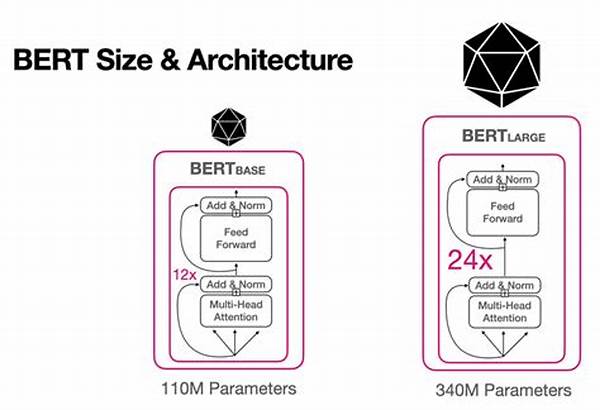In today’s fast-paced digital era, the evolution of AI and machine learning technology is nothing short of remarkable. Once the stuff of science fiction, advanced language models and AI-driven solutions are intricately woven into the fabric of daily life, transforming how we interact with our devices, analyze data, and even how businesses run. At the heart of many of these innovations lies an essential component: bidirectional encoding representations models. But what exactly are these models, and why should you care about them?
Imagine a world where computers understand language as fluently as humans do. A realm where AI can accurately interpret, analyze, and generate human language in ways that feel almost magical. This isn’t a future possibility — it’s a present reality, thanks to bidirectional encoding representations models. These models have not just revolutionized the realm of natural language processing (NLP), but they’ve also paved the way for smarter chatbots, more intuitive search engines, and significantly improved machine translation services.
Harnessing the full potential of bidirectional encoding, we’re dealing with models that can consider context from both directions — forwards and backwards — simultaneously. This ability is groundbreaking in the field of NLP because it allows for a richer understanding of language. To illustrate this with a sprinkle of humor, think about how you might misinterpret the sentence “The chicken is ready to eat” if you only read it in one direction. Is the chicken the diner, or is it destined for dinner? Bidirectional models address such ambiguities by processing context from both sides.
Beyond simply making language comprehensible to machines, bidirectional encoding representations models have significant implications for business. From automating customer service responses to enhancing user experiences on apps and websites, they provide businesses with unique selling points that can give them a significant competitive edge. Imagine having an AI assistant that not only understands your words but captures the tone, intent, and nuances behind them. This is not just a technological leap; it’s a transformative journey that’s reshaping industries and ecosystems.
The Impact of Bidirectional Encoding on NLP
Having glanced at the marvels of bidirectional encoding representations models, let’s delve deeper into their transformative impact on NLP, starting with their unparalleled ability to contextualize language intricately.
—
Understanding the intricate workings of language has always been one of humanity’s greatest challenges when it comes to technology. For computers, human language isn’t just a form of communication — it’s a complex, ever-evolving entity that requires nuanced understanding. Enter bidirectional encoding representations models, the powerful tools that are redefining the landscape of natural language processing.
In a world inundated with data, the ability to process and understand language contextually becomes paramount. These models turn this complexity into simplicity by reading text data in both directions simultaneously. The result? A richer, more nuanced understanding of language. Unlike their unidirectional counterparts, bidirectional models can capture more intricate linguistic patterns, idioms, and contextual cues that are often lost in translation, both literally and figuratively.
Real-World Applications
The beauty of bidirectional encoding representations models is reflected in their real-world applications that stretch across various industries. From enhancing search engines to developing advanced translation tools, these models are the silent workhorses behind many modern conveniences. They’ve made it possible for businesses to automate customer support, offer more personalized content to users, and make sophisticated predictions based on nuanced human language.
But it’s not all business. One could argue that bidirectional encoding representations models are making the internet a kinder, more accessible place. By facilitating more accurate translations and enabling machines to understand context and sentiment, we’re enhancing online interactions. It aligns with a broader vision of AI: to assist and understand, rather than confuse and complicate.
Bridging the Language Gap
A key player in bridging language barriers, bidirectional encoding empowers devices and applications with the ability to comprehend and translate languages with unprecedented accuracy. They’re making conversations across languages more fluid, allowing businesses to reach global audiences more effectively. They serve as the bridge in the digital divide, opening channels of communication that were previously hindered by language barriers.
Furthermore, as these models continue to evolve, the expectation is that they’ll enable even more intuitive and empathetic human-computer interactions. This progression opens a Pandora’s Box of possibilities — from real-time translation earbuds to smarter virtual assistants that can seamlessly engage with users from diverse linguistic backgrounds.
The Future Is Bidirectional
Despite the strides we’ve made, bidirectional encoding representations models are just scratching the surface of what’s possible. The future holds even more promise, with advancements potentially leading to models that understand not just languages but the cultural, emotional, and psychological nuances that come with them.
In summation, bidirectional encoding representations models aren’t just a technological innovation. They’re architects of a new digital landscape, one where language is no longer a barrier but a bridge. Whether it’s enhancing communication, improving business operations, or simply making our interactions with technology more human, their impact is immense and ever-growing. As we continue to chart the course of AI and NLP, these models will undoubtedly remain at the helm, steering us towards a more interconnected, intuitive future.

